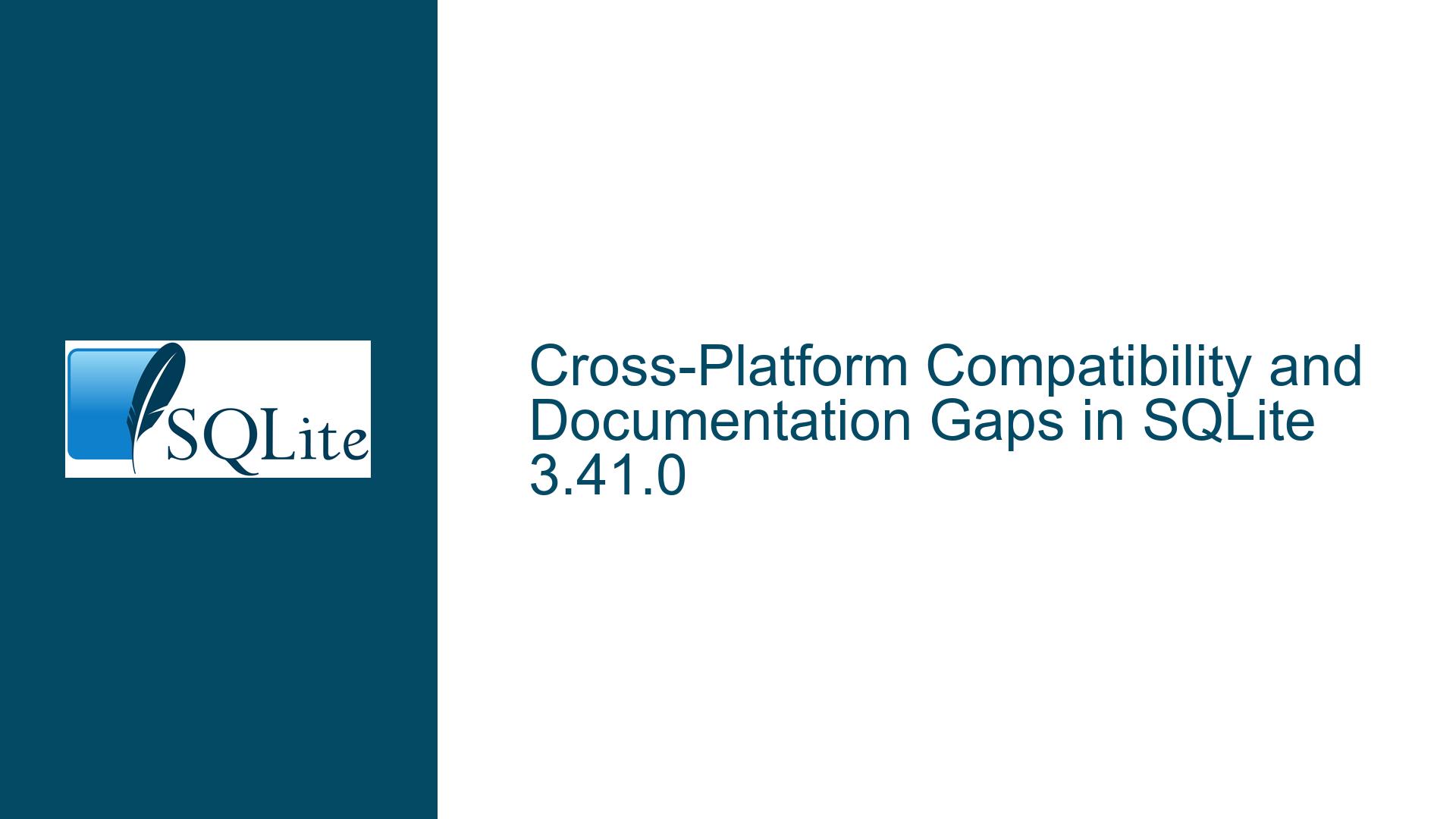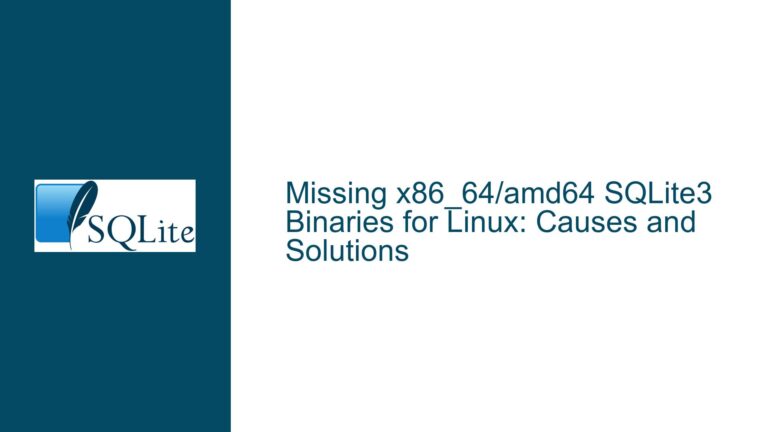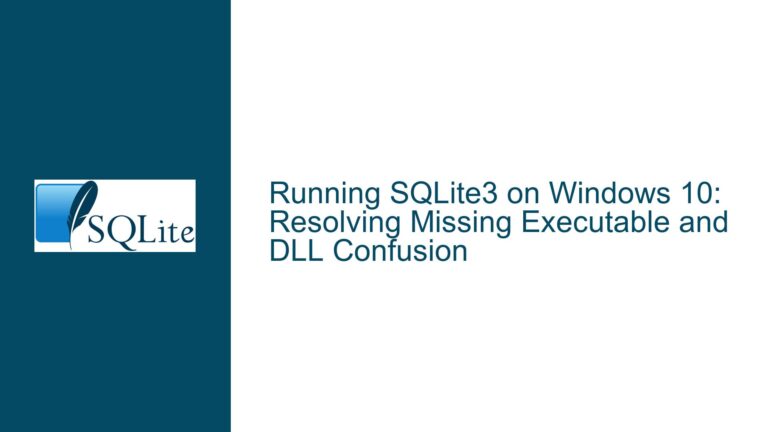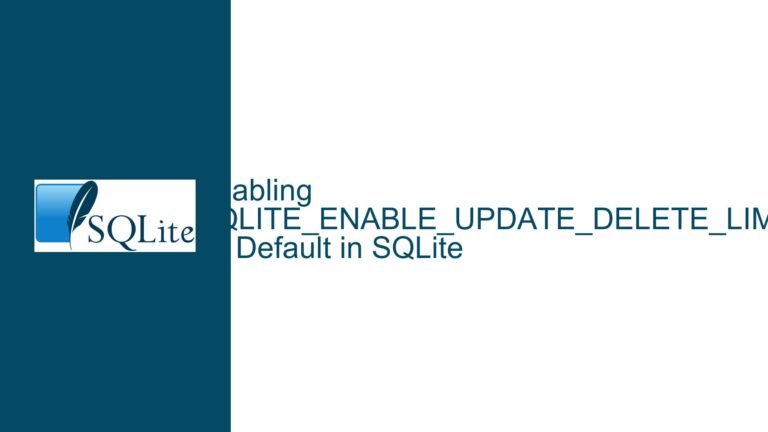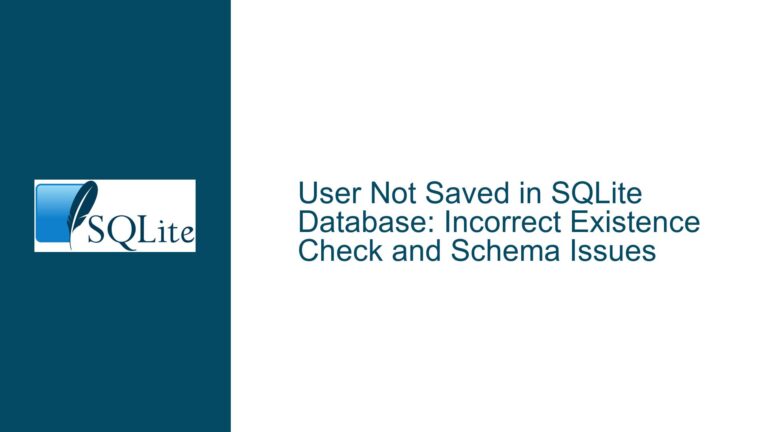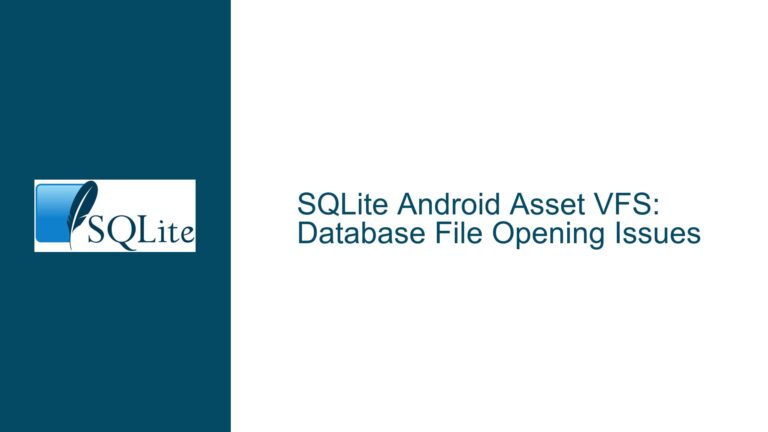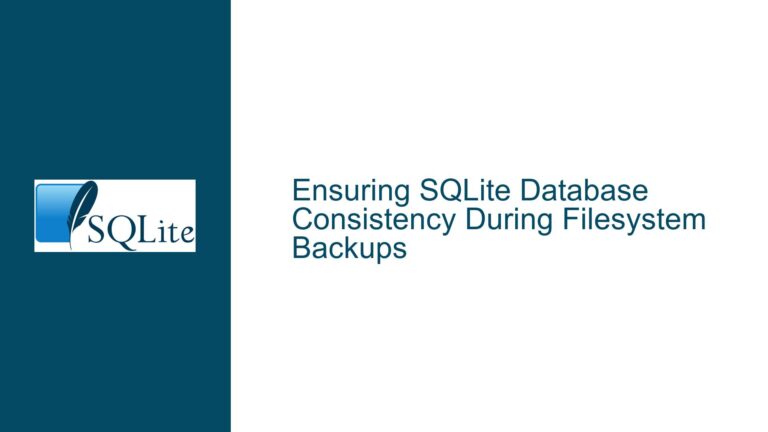Cross-Platform Compatibility and Documentation Gaps in SQLite 3.41.0
Issue Overview: Cross-Platform Compatibility and Documentation Gaps in SQLite 3.41.0
The upcoming release of SQLite 3.41.0 introduces several new features and enhancements, including the addition of base64() and base85() functions to the CLI, as well as the integration of the carray extension with support for iovec structures. However, the discussion highlights two primary issues that could impact the usability and adoption of these new features: cross-platform compatibility concerns and gaps in the documentation.
The carray extension, which allows for efficient handling of arrays of data, currently relies on the POSIX-defined iovec structure. While this structure is well-defined in POSIX-compliant systems, its use in SQLite raises questions about cross-platform compatibility, particularly on Windows, where POSIX structures are not natively supported. Additionally, the documentation for the new base64() and base85() functions is missing from the draft website, and the documentation for the carray extension lacks clarity on the structure and usage of iovec.
These issues are significant because they affect both the usability of SQLite on non-POSIX platforms and the ability of developers to effectively utilize the new features. Without proper documentation, developers may struggle to understand how to use the new functions, and without cross-platform compatibility, the utility of the carray extension is limited on Windows systems.
Possible Causes: Cross-Platform Compatibility and Documentation Gaps
The root cause of the cross-platform compatibility issue lies in the decision to use the POSIX iovec structure within the carray extension. While this structure is convenient for POSIX-compliant systems, it is not natively supported on Windows. Although SQLite includes a hand-written implementation of iovec for Windows builds, this solution is not ideal. The private nature of this implementation means that developers who wish to write portable code must duplicate the structure in their own code, leading to potential One Definition Rule (ODR) violations and increased complexity.
The use of size_t in the iovec structure further complicates matters. size_t is a platform-dependent type, and its size can vary depending on the build environment. This variability is at odds with SQLite’s general approach to platform independence, where fixed-size types are typically used to ensure consistent behavior across different platforms.
The documentation gaps, on the other hand, appear to be a result of the rapid development and release cycle of SQLite 3.41.0. The base64() and base85() functions were added to the CLI, but the corresponding documentation was not updated in time for the draft release. Similarly, the documentation for the carray extension does not provide sufficient detail on the structure and usage of iovec, nor does it clarify whether the blobs need to be in contiguous memory or can be scattered.
These issues are compounded by the fact that the documentation links to incorrect files, further confusing developers who are trying to understand how to use the new features. The lack of explicit documentation on the requirements for using iovec with carray leaves developers guessing about the necessary memory layout and the potential for using non-null-terminated strings.
Troubleshooting Steps, Solutions & Fixes: Addressing Cross-Platform Compatibility and Documentation Gaps
To address the cross-platform compatibility issues, SQLite should consider defining a platform-independent structure for scatter-gather I/O operations, similar to the POSIX iovec structure but tailored to SQLite’s needs. This structure, which could be named sqlite3_iovec, should be included in the SQLite amalgamation header (sqlite3.h) to ensure that it is easily accessible to developers on all platforms. The sqlite3_iovec structure should use fixed-size types to maintain consistency across different platforms and avoid the pitfalls associated with size_t.
In addition to defining a new structure, SQLite should update the carray extension to support both blob[] and text[] types, allowing for scatter-gather operations on both binary and text data. This change would enable developers to use non-null-terminated strings with the carray extension, addressing a common use case that is currently unsupported. The implementation of these changes should be straightforward, as the necessary modifications to the carray extension code are minimal.
To resolve the documentation gaps, the SQLite team should prioritize updating the draft website to include comprehensive documentation for the new base64() and base85() functions. This documentation should provide clear examples of how to use these functions, as well as any relevant performance considerations. Additionally, the documentation for the carray extension should be expanded to include detailed information on the structure and usage of iovec, including the requirements for memory layout and the potential for using non-null-terminated strings.
The documentation should also be reviewed to ensure that all links point to the correct files and that any references to platform-specific structures or functions are clearly marked. This will help prevent confusion and ensure that developers have access to accurate and up-to-date information.
In the short term, developers who need to use the carray extension on Windows can work around the cross-platform compatibility issues by duplicating the hand-written iovec implementation in their own code. However, this is not an ideal solution, and developers should be aware of the potential for ODR violations and other issues that may arise from this approach.
For developers who require immediate access to the base64() and base85() functions, the lack of documentation can be mitigated by referring to the SQLite source code or by experimenting with the functions in a test environment. However, this approach is not sustainable in the long term, and the SQLite team should prioritize updating the documentation as soon as possible.
In conclusion, the issues of cross-platform compatibility and documentation gaps in SQLite 3.41.0 are significant but can be addressed through a combination of code changes and documentation updates. By defining a platform-independent sqlite3_iovec structure, updating the carray extension to support both blob[] and text[] types, and providing comprehensive documentation for the new features, SQLite can ensure that its latest release is both usable and accessible to developers on all platforms.
